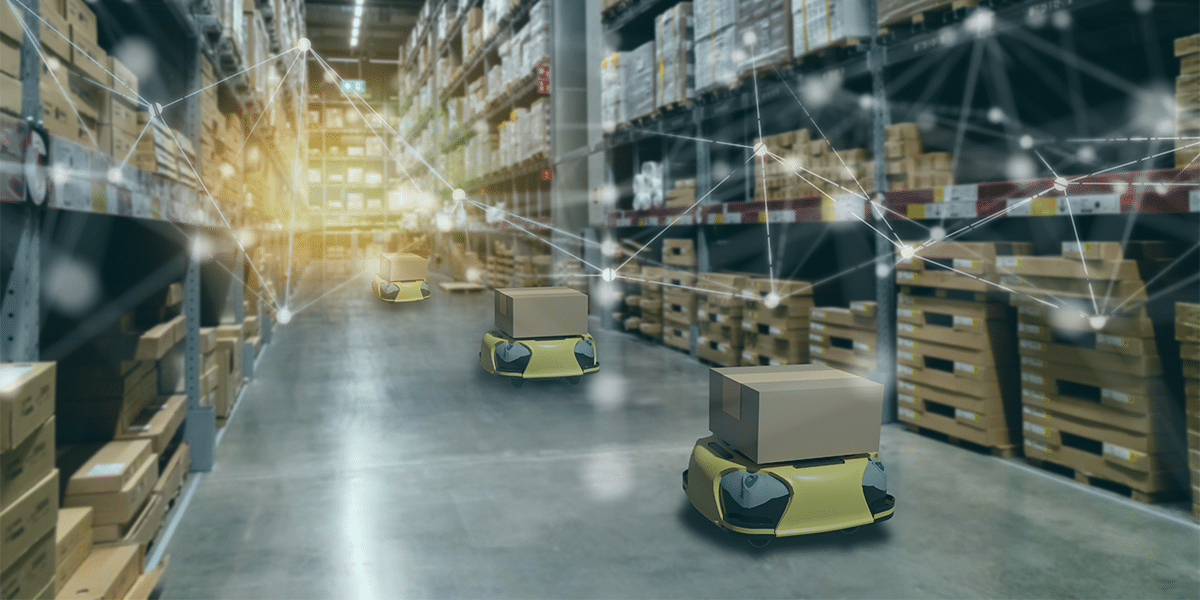
The Latest Warehouse Technology Trends You Should Know About
July 4, 2022 | Staffing Blog
Automation. Robotics. Software. There are many opportunities to use the latest warehouse technology to create efficiencies and improve productivity so your company can get more done for less.
In an effort to increase profits, it’s important to know more about technological trends in the warehouse. This way, you can be selective about which pieces of technology you pursue.
You’ll also be better equipped to optimize your workforce in the warehouse by taking routine tasks away from your people and providing them with the opportunity to execute more valuable tasks. Finding the right combination of technology and human optimization will help you create a more robust and efficient work environment!
To get started, let’s review some warehouse technology trends that you should know about.
Latest Warehouse Technology For Your Company
Warehouse companies are turning to the following technological options to support day-to-day activity in the warehouse.
1. Warehouse Automation
As you probably already know, automation is a big initiative for many warehouses. Companies are looking for new and improved ways to automatically track inventory movement throughout the warehouse, predict when inventory needs to be re-stocked, and anticipate problems before they happen. Consider some ways to deploy automation technology in the warehouse:
- Robots can replace labor-intensive or repetitive tasks.
- Automation software can replace data-entry tasks and spreadsheets.
- Predictive analytics can be used to anticipate problem areas in the warehouse.
2. Warehouse Robotics
Robots are becoming commonplace in the warehouse to execute basic tasks that free up workers to perform more important tasks. And, they can execute tasks more than just picking up boxes and moving them down the assembly line. As robotics technology continues to improve, there are more ways to deploy robots in the warehouse.
- Automated guided vehicles (AGVs) can be used to replace forklifts that are typically driven by workers.
- Articulated robotic arms can perform more complex tasks beyond just picking and moving. They can now receive and even palletize items.
- Collaborative robots bridge the gap between humans and technology by helping workers do their job more efficiently. For example, these robots can intelligently follow around workers to receive and hold picked items.
3. Warehouse Management System (WMS)
Many companies already use a WMS to manage the warehouse, and WMS has replaced spreadsheets and disconnected legacy pieces of software to improve the functionality of the warehouse. Now, many WMS vendors are taking their software platforms to the next level by introducing advanced capabilities. Would these technological enhancements help your warehouse?
- Real-time inventory tracking helps workers identify which items need their attention and where they are located.
- Use of Artificial Intelligence (AI) to predict demand and initiate the process of fulfilling an expected order or addressing a shortage.
- Support integrations with other pieces of technology in your warehouse or other business platforms (e.g., your ERP) to create reports for other stakeholders.
4. Warehouse Sensors
Sensors can be used to support everyday activity in the warehouse that involves inventory, people, and technology. There are many different ways to utilize sensors to help your team make informed decisions about how to manage the different components that make up a safe, efficient, and productive warehouse.
- Inventory control sensors can monitor when items enter and leave the warehouse. They can feed data into software to support real-time monitoring.
- Safety sensors can detect problem areas (such as too many workers gathered in one area) or when automated vehicles pose a risk to employees on the floor (e.g., AGVs moving near blind corners).
- Thermal heat sensors can track when certain employees are overheated and need to take a break.
- Technology sensors can detect when certain pieces of technology used in the warehouse are due for maintenance or temporarily need to be placed out of service.
5. Employee Tracking
There is a stigma around using technology to track or survey employee activity in the warehouse. However, if done correctly, your company can use tracking technology to support your employees, not make them feel like they are schoolchildren who need to be monitored to ensure they are doing their job and not slacking off. Consider some technological trends around employee tracking in the warehouse.
- Logistical mapping that works with AI and other automation technology can be used to identify which employees are in the best geographical position in the warehouse to address a problem.
- Automated alerts can help workers know where they are most needed in the warehouse at any given moment so that they can readily solve the problem.
- Productivity monitoring can be used to detect when employees are near their set limit for how much they can produce in a given shift before their productivity drops.
Contact Allegiance Staffing to Support Your Warehouse
We understand the importance of technology in the warehouse. That’s why we want to help your company identify the ideal mix of talent and technology to realize the most productive, cost-efficient, and profitable warehouse operation.
At Allegiance Staffing, our specialty is labor optimization. Our team of experts will work to understand your current operating reality, see where you can drop high-quality talent into current or new roles, and help you blend the latest warehouse technology with the right people to elevate your company’s operation.
Contact us today to schedule a consultation about the current state of your warehouse labor force. Let’s connect your company to the best workers for the job!
